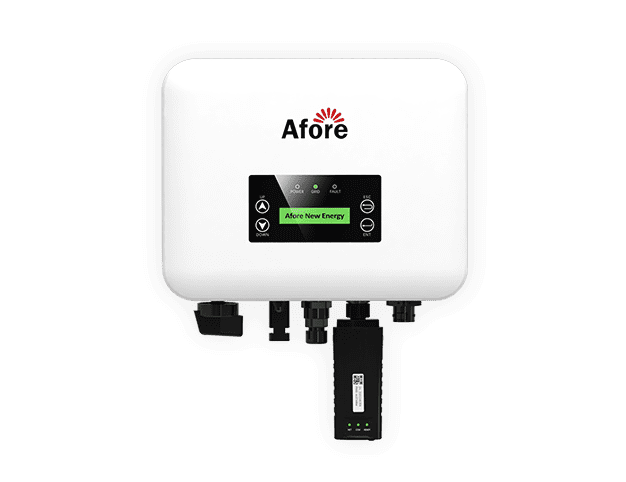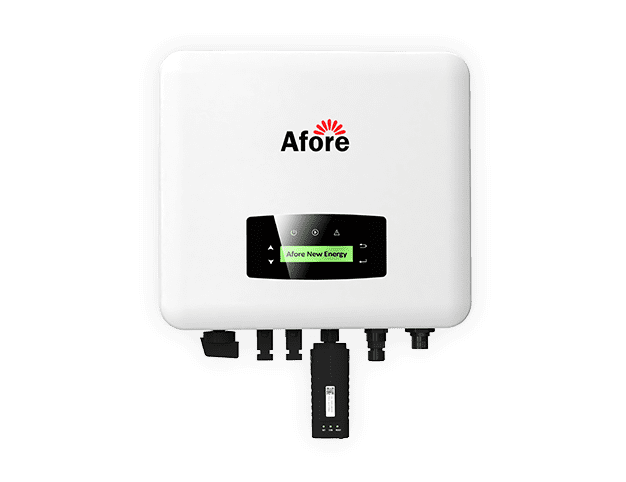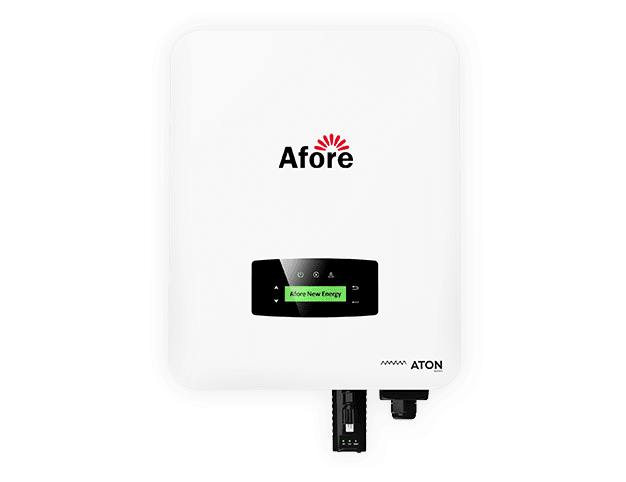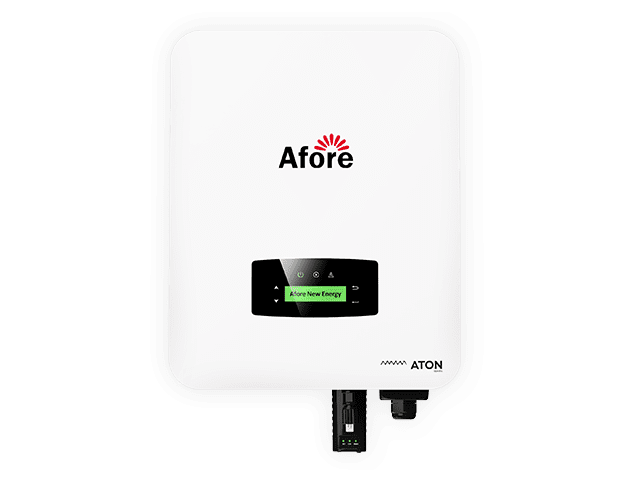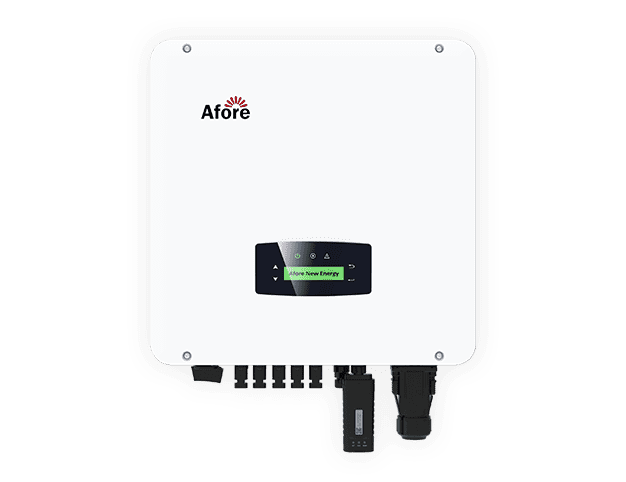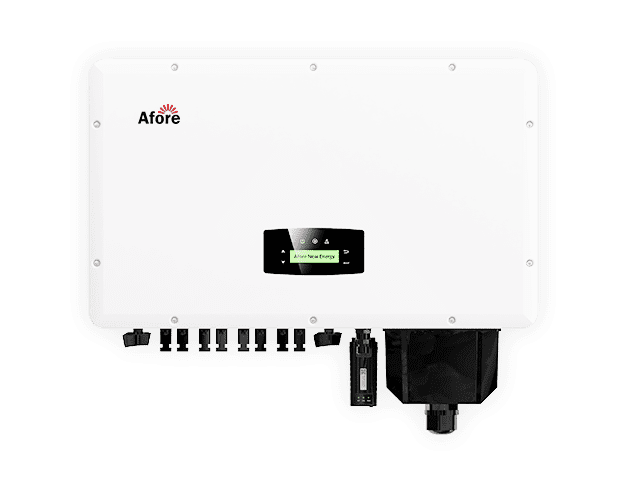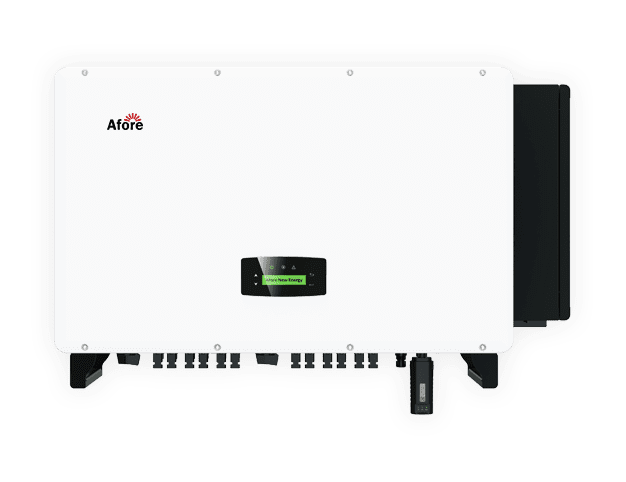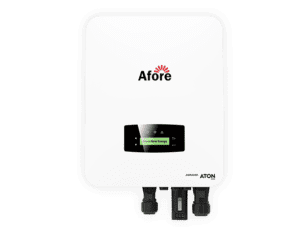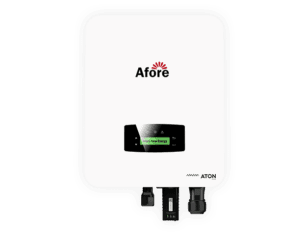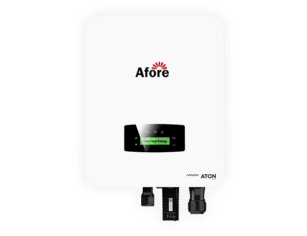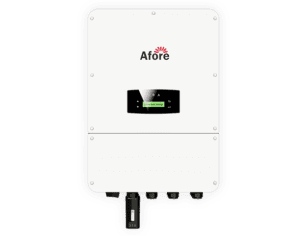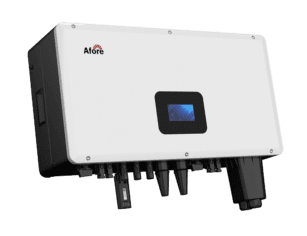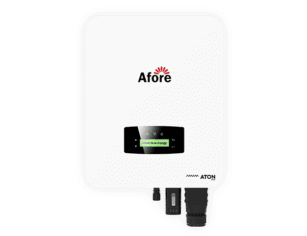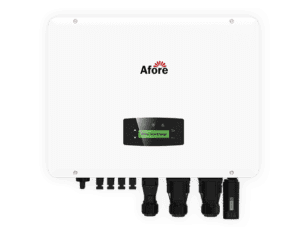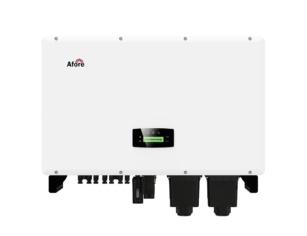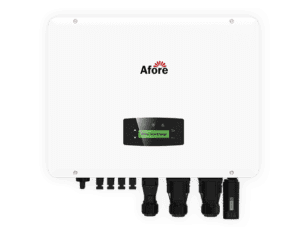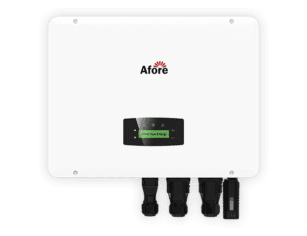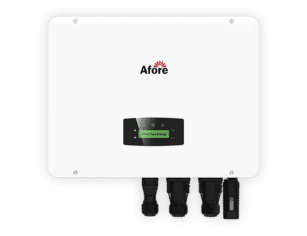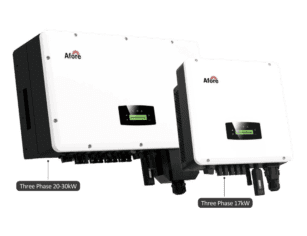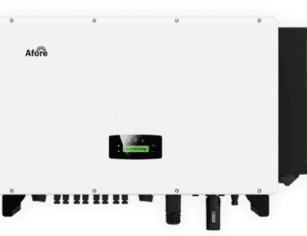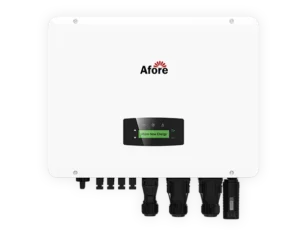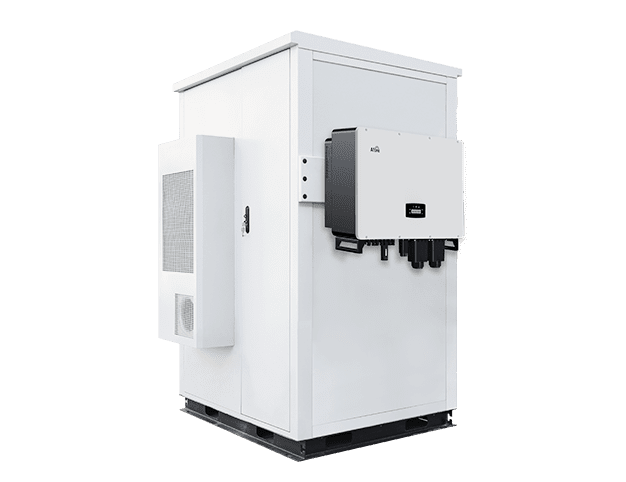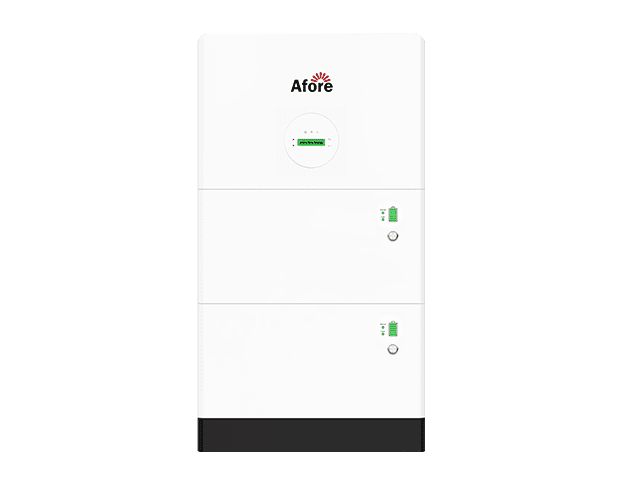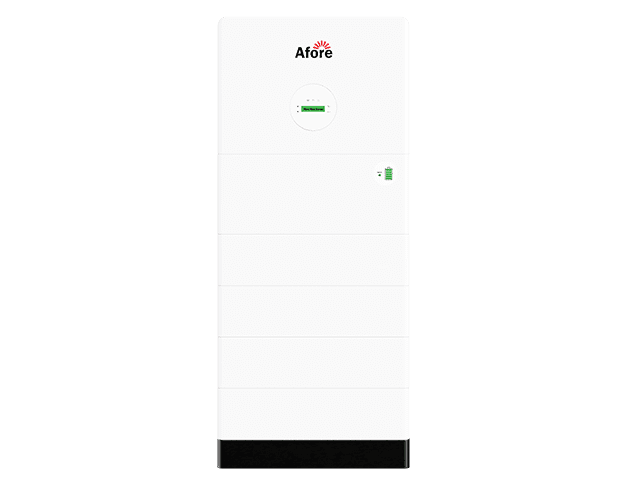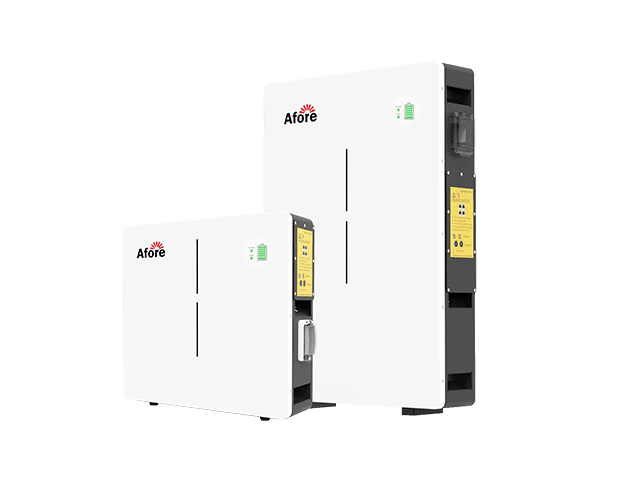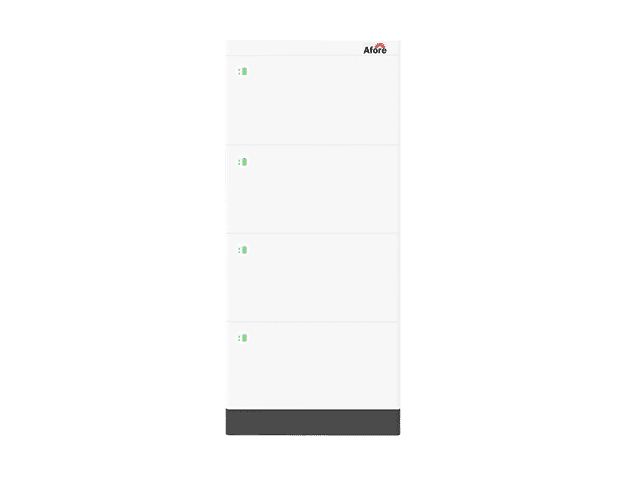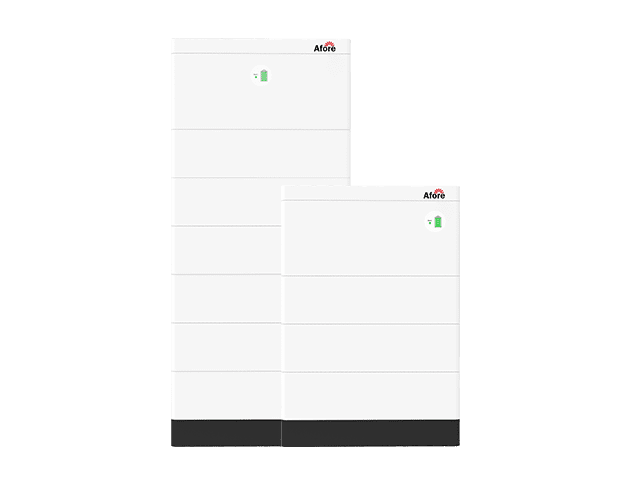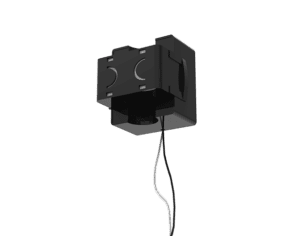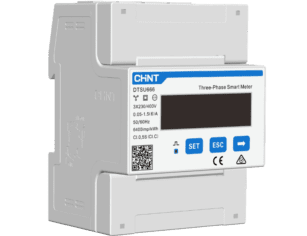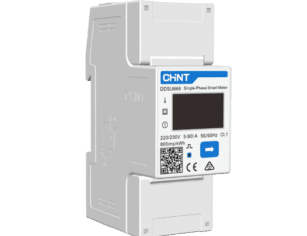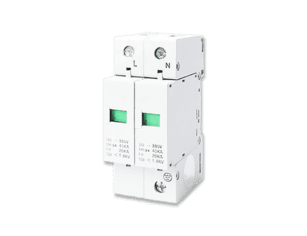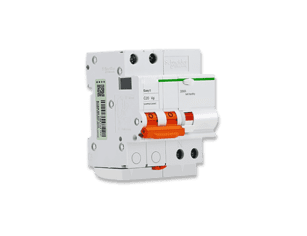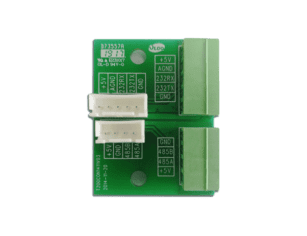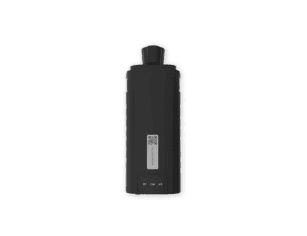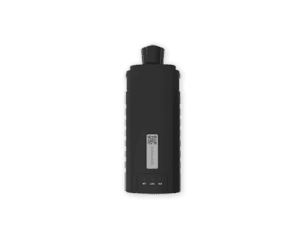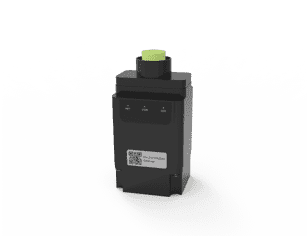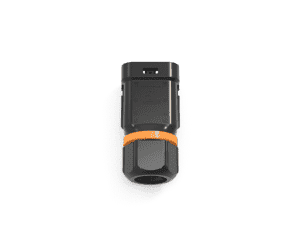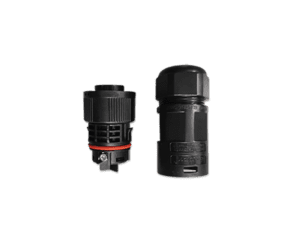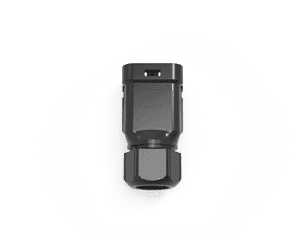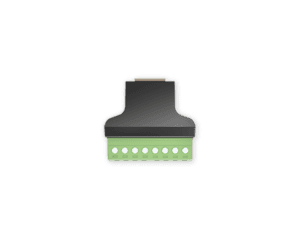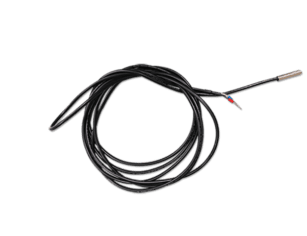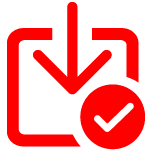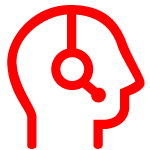How Many Inverters Do You Need for Your Solar System?

Зміст
When planning a solar energy system, the question “How many inverters do I need?” isn’t just academic—it’s central to ensuring your system performs efficiently, reliably and safely. In this article we’ll dive deep into the world of inverter sizing, explore how many panels you can connect to one inverter, why the design matters, and how the choice of a solar inverter affects cost, performance and reliability. I’ll speak from years of experience in solar installation and design, so you know you’re getting practical insights grounded in real-world systems.
What is a Solar Inverter and Why It Matters
When people first think about solar power, they often picture shiny panels soaking up sunlight on a rooftop. What’s easy to forget is that those panels alone can’t power a home. The real magic happens because of one small but mighty device — the inverter. Without it, your solar system would simply produce electricity that your home can’t use.
Definition & Function of a Solar Inverter
At its core, a solar inverter is the heart of a solar energy system. It performs a crucial job: converting the direct current (DC) electricity produced by solar panels into alternating current (AC) electricity that powers your appliances, lights, and everything else in your home. Your utility grid and household wiring run on AC power, so without an inverter, all that clean energy would just sit there, unusable.
But an inverter does more than conversion. Modern systems constantly monitor voltage, current, and power output to ensure safety and efficiency. Many inverters even provide performance data, allowing homeowners to track how much energy their panels are generating and whether their system is operating at its best.
In essence, think of the inverter as the brain of your solar setup — analyzing, adjusting, and optimizing energy flow every second.
Типи сонячних інверторів
Not all inverters are built the same. Choosing the right one depends on the size and layout of your system, shading conditions, and your goals for monitoring and performance.
- String Inverters: These are the traditional workhorses. A string inverter connects to a “string” of solar panels, converting all their combined output into usable AC power. It’s efficient, cost-effective, and perfect for arrays where panels face the same direction and receive uniform sunlight.
- Microinverters: These are small inverters attached to individual panels (or sometimes to pairs of panels). Each microinverter works independently, converting DC to AC right at the panel. The benefit is flexibility: if one panel is shaded or underperforming, it won’t drag down the others.
- Hybrid or Optimized Inverter Systems: These combine the benefits of both worlds. Power optimizers manage DC output at each panel level, feeding it to a central inverter for conversion. This setup boosts efficiency and allows for more detailed monitoring.
Understanding which type fits your installation can mean the difference between average and exceptional performance. The solar inverter you select directly influences how much usable power your panels generate throughout the year.
Why Sizing and Matching Matter
Every inverter is designed to handle a specific amount of voltage, current, and total power. If your solar array produces more energy than the inverter can process, it may “clip” the excess — meaning that valuable power is wasted. On the other hand, an inverter that’s too large may operate inefficiently when sunlight is low.
The key lies in finding the right balance between your panels and your inverter, often described by the DC-to-AC ratio or inverter loading ratio (ILR). A well-sized inverter maximizes energy yield while protecting your equipment from stress or damage.
A properly matched solar inverter system will:
- Increase efficiency by converting nearly all usable energy from your panels.
- Extend equipment life by keeping voltage and current within safe limits.
- Reduce maintenance issues caused by overheating or overloading.
- Provide accurate data for monitoring and troubleshooting.
How Many Inverters Do You Need in Your Solar Setup?
One of the first questions most homeowners ask when planning a solar system is, “How many inverters do I actually need?” It’s a smart question — and one that doesn’t have a single answer. The right number of inverters depends on how your panels are arranged, how much power you plan to generate, and what kind of inverter technology you’re using. Getting this balance right ensures you’re not wasting energy, money, or roof space.
Residential Systems – The Typical Case
For most homes, the setup is fairly straightforward. A single inverter is usually enough to handle the power from all your solar panels. This is often referred to as a string inverter configuration, where multiple panels are connected in series, forming a “string.” The inverter then takes the combined DC power from that string and converts it into AC power for your home.
This approach works beautifully when all panels face the same direction and receive consistent sunlight throughout the day. It’s cost-efficient, easy to maintain, and reliable. Most small to mid-size rooftop systems — say, between 3 kW and 10 kW — fall into this category.
However, if your roof has multiple sections facing different directions, a single inverter might not capture energy as efficiently. In such cases, you may need more than one inverter or consider a system design that allows multiple “MPPT” (maximum power point tracking) inputs to manage each roof section separately.
Larger & Commercial Systems – Multiple Inverters
As solar arrays grow in size, their energy output increases beyond what a single inverter can handle. Large residential, agricultural, or small commercial systems often use multiple inverters to share the electrical load. This setup prevents any one inverter from being overloaded and makes it easier to service individual components without shutting down the entire system.
Multiple inverters are also used when a property has several distinct areas for solar panels — for example, a main roof, a detached garage, and a ground-mounted array. Each area might receive sunlight at different times of day or at different angles, so it makes sense to give each group its own inverter to maximize energy harvest.
Using several smaller inverters can also provide redundancy: if one fails, the rest continue working, keeping most of the system operational. This modular approach adds reliability and flexibility, especially when expanding capacity later on.
What Factors Determine the Number of Inverters
When designing a solar energy system, the decision on how many inverters to install should never be a guess. Several key factors come into play:
- System Size (Total kW Output)
The total wattage of your panels determines how much energy your inverter must convert. As the system grows, you may need additional inverters to handle the higher load safely.
- Inverter Capacity and Rating
Each inverter has a maximum rated capacity measured in kilowatts (kW) or kilovolt-amperes (kVA). Exceeding this limit can reduce efficiency or damage the unit. The goal is to match your inverter’s rating to your total panel output using an appropriate DC-to-AC ratio.
- Panel Configuration and Orientation
Panels on different roof slopes or orientations receive sunlight at different intensities. Mixing them on a single inverter can cause mismatched voltage and current levels, reducing overall output. In such cases, multiple inverters or multi-MPPT inputs are essential.
- Shading and Environmental Conditions
Trees, chimneys, or nearby buildings can cause partial shading at certain times. An inverter connected to shaded panels might see uneven performance. Installing more than one inverter helps isolate shaded sections so they don’t drag down the entire system.
- Budget and Installation Flexibility
Sometimes, choosing two smaller inverters instead of one large one is more economical and easier to install. It can also simplify maintenance, since each inverter is lighter, less expensive to replace, and easier to upgrade.
- Future Expansion Plans
If you think you might add more panels later, it’s wise to plan inverter capacity accordingly. Having multiple smaller inverters or one with spare input capacity gives you room to grow without redesigning the whole system.
In short, there’s no universal formula for how many inverters a solar setup should have. It depends on design, roof space, panel orientation, and long-term goals. But one rule holds true: the inverter should always be matched thoughtfully to the solar array, not just added as an afterthought.
A well-designed system with the right number of inverters will:
- Maximize energy conversion efficiency.
- Reduce the risk of electrical overloads.
- Simplify maintenance and troubleshooting.
- Improve overall system reliability and longevity.
Choosing the right number of solar inverters isn’t just about capacity — it’s about designing a system that works harmoniously with your property’s structure, energy needs, and environment. When you get the balance right, your system runs smoother, lasts longer, and produces more clean energy year-round.
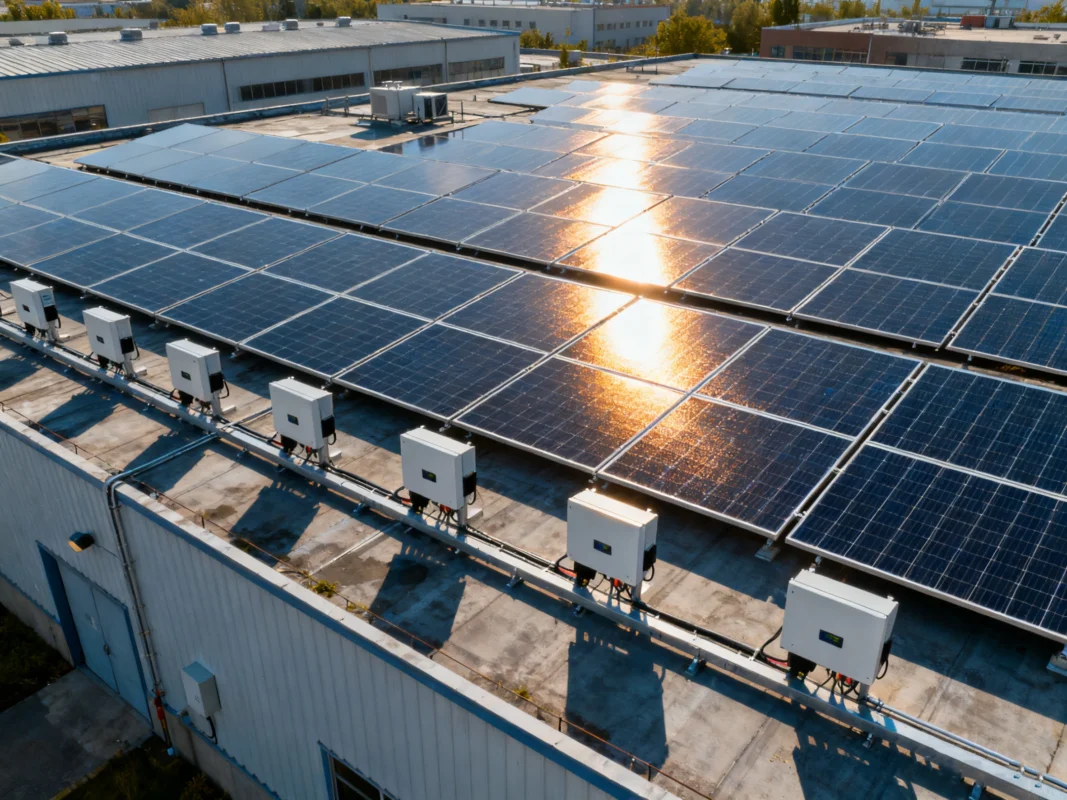
How Many Solar Panels Can You Connect to an Inverter?
Knowing how many solar panels you can safely connect to an inverter is one of the most important parts of solar system design. Too few, and you’re not using your inverter efficiently. Too many, and you risk damaging equipment or wasting potential power. The goal is to find the perfect match between the panels and the inverter — one that maximizes energy harvest without overloading the system.
This section breaks down how to determine that balance, what calculations to use, and the key technical factors that every installer or homeowner should understand before connecting solar panels to an inverter.
Matching Panel Output to Inverter Input – Voltage & Current Limits
Every solar inverter comes with limits — a maximum input voltage, a maximum input current, and a total power capacity it can safely handle. These numbers aren’t arbitrary; they’re based on what the internal electronic components can process without overheating or shutting down.
If the combined voltage of your solar panels exceeds the inverter’s maximum input voltage (often called Voc max), it can trigger a safety shutdown or even cause permanent damage. Conversely, if your voltage is too low, the inverter may fail to start up or operate inefficiently.
Current matters just as much. When panels are wired in parallel, their current adds up. Exceeding the inverter’s current rating can lead to overheating and reduced lifespan.
That’s why every system designer must carefully calculate both the total voltage and current before deciding how many panels to connect. A well-balanced configuration keeps the inverter running at peak efficiency and within safe electrical limits.
Calculating Number of Panels in Series & Parallel
To know how many panels can connect to one inverter, you need to understand how wiring affects voltage and current:
- Series connections add up voltage while keeping current the same.
- Parallel connections increase current while keeping voltage constant.
Let’s say each solar panel produces 40 V open-circuit voltage (Voc) and 10 A of current. If your inverter’s maximum input voltage is 600 V, you can connect up to 15 panels in series (15 × 40 V = 600 V). But you must also check the inverter’s current limit — for example, if it allows 20 A, you could have two parallel strings of 10 A each.
Temperature also plays a big role. On cold mornings, voltage spikes upward, so engineers add a safety buffer (usually 10–15%) to prevent exceeding the inverter’s maximum. This means in our example, you might reduce the number of panels per string from 15 to 13 or 14 for safety.
It’s not just a math exercise — it’s about protecting your investment and ensuring the inverter performs optimally in all conditions.
DC to AC Ratio and “Over-Paneling” (Oversizing the Array)
One term you’ll often hear in solar design is the DC-to-AC ratio, also called the inverter loading ratio (ILR). This describes how much DC power (from panels) is connected relative to the inverter’s AC capacity. For example, if your solar panels can produce 8 kW of DC power but your inverter is rated for 6 kW of AC output, the ratio is 1.33.
A moderate oversize — typically 1.2 to 1.4 times the inverter rating — is not only acceptable but often desirable. It helps the inverter reach full capacity earlier in the day and stay efficient during cloudy or low-sunlight conditions.
However, if the DC input is too large, the inverter can’t process all the energy. It will “clip” the extra output, flattening the production curve and wasting potential power. This is why oversizing must stay within the manufacturer’s recommended limits.
In short: a little oversizing is beneficial; too much can backfire. The key is understanding how your inverter responds to high DC input and planning accordingly.
Risks of Connecting Too Many Panels to One Inverter
It might be tempting to squeeze as many panels as possible onto a single inverter to save money, but that’s a false economy. Overloading your inverter comes with real risks:
- Power clipping and energy loss – When panel output exceeds the inverter’s rated capacity, it simply can’t convert the excess DC energy. That lost energy translates directly into lost savings.
- Overheating and reduced efficiency – Pushing an inverter beyond its limits can cause heat buildup, forcing it to throttle performance or shut down entirely.
- Shortened lifespan – Continuous stress can degrade internal components, leading to premature failure and costly replacements.
- Warranty violations – Exceeding the rated specifications may void the inverter’s warranty or fail to meet electrical safety standards.
The smarter move is to size your system so that your panels and inverter operate in harmony. A properly balanced system will consistently produce the most usable electricity, operate safely, and last for decades.
Best Practices for Sizing Inverters and Panel Arrays
Designing a solar system isn’t just about buying panels and wiring them together. The true performance of your system depends on how well your panels and inverter are matched. Proper sizing ensures your system runs efficiently, safely, and cost-effectively for decades. A well-designed configuration minimizes losses, prevents overload, and keeps your solar inverter performing at its best even under changing sunlight conditions.
Below are practical, field-tested best practices that professional installers and energy engineers use to get inverter sizing right.
Step-by-Step Sizing Workflow
Determine Total Panel Wattage (DC Capacity)
Start by adding up the rated wattage of all your panels. For example, twenty 400-watt panels give you an 8 kW DC system. This number represents your array’s total potential output under ideal conditions.
Choose the Right Inverter Size (AC Rating)
The inverter rating should be slightly lower than your total panel wattage to maintain a good DC-to-AC ratio. This allows your inverter to operate closer to full capacity more often, improving energy yield without unnecessary clipping.
Check Inverter’s Maximum Input Voltage and Current
Never exceed the voltage or current ratings listed on your inverter’s datasheet. Calculate your panel string configurations (series and parallel) to stay within these safe limits. Include a temperature correction factor since voltage increases on cold days.
Design String and Array Layout
Plan your wiring so that the inverter receives optimal voltage and current throughout the day. For rooftops with multiple orientations, design separate strings or use inverters with multiple tracking inputs to handle variations efficiently.
Evaluate Shading and Orientation
Even minor shading can affect an entire string. If you expect partial shading from trees, chimneys, or nearby structures, separate the affected panels onto a different inverter input or use microinverter-style designs to limit performance loss.
Account for Future Expansion
Think ahead. If you may add panels later, choose an inverter with spare capacity or plan for an additional inverter in the future. Upgrading capacity later is easier when the original design includes room to grow.
Verify Compliance and Safety
Always confirm that your configuration meets local electrical codes and grid-connection standards. Proper grounding, breaker sizing, and inverter protection features ensure safety and long-term reliability.
By following these steps, you create a system that is efficient, compliant, and resilient. Each decision — from string length to inverter rating — shapes how well your solar investment performs over time.
Guidelines & Rules of Thumb
Professionals often use a few time-tested rules when pairing panels with inverters:
- The DC-to-AC ratio typically ranges from 1.2 to 1.4. This means your panel wattage can be 20–40 % higher than your inverter’s rated output.
- Avoid going beyond that ratio unless your system has predictable conditions (like frequent cloud cover or northern latitudes). Oversizing beyond safe limits can cause consistent clipping and reduce inverter lifespan.
- Keep your inverter operating within 30–90 % of its rated capacity most of the day. Below 30 %, efficiency drops sharply.
- Plan string voltage at around 80–90 % of the inverter’s maximum input voltage for a safety margin.
- Always include environmental derating — voltage increases in cold weather and current decreases with heat.
A correctly sized solar inverter works harder when needed but never beyond its comfort zone. It quietly converts every watt your panels can produce while maintaining safety and efficiency.
Monitoring, Maintenance & Safety Considerations
Once your inverter and array are properly sized, the next priority is long-term performance. Even the most perfectly designed system needs regular oversight to ensure it continues to deliver high efficiency.
- Monitor Output Regularly: Use the inverter’s data interface or monitoring system to track daily production. Sudden drops can indicate shading, wiring issues, or inverter stress.
- Check for Overheating or Fault Codes: Keep the inverter in a cool, ventilated area and periodically inspect it for dust, corrosion, or unusual noise.
- Maintain Electrical Connections: Loose or corroded connectors can cause voltage drops, heat buildup, or intermittent shutdowns.
- Follow Manufacturer Guidelines: Adhering to specified ratings and maintenance schedules helps preserve your inverter’s warranty and lifespan.
- Schedule Professional Inspections: Annual maintenance checks ensure all electrical components remain safe and fully functional.
A well-maintained solar inverter system can operate efficiently for 10–15 years or more. Regular monitoring not only prevents failures but also helps you detect early signs of degradation, allowing small issues to be fixed before they affect system output.
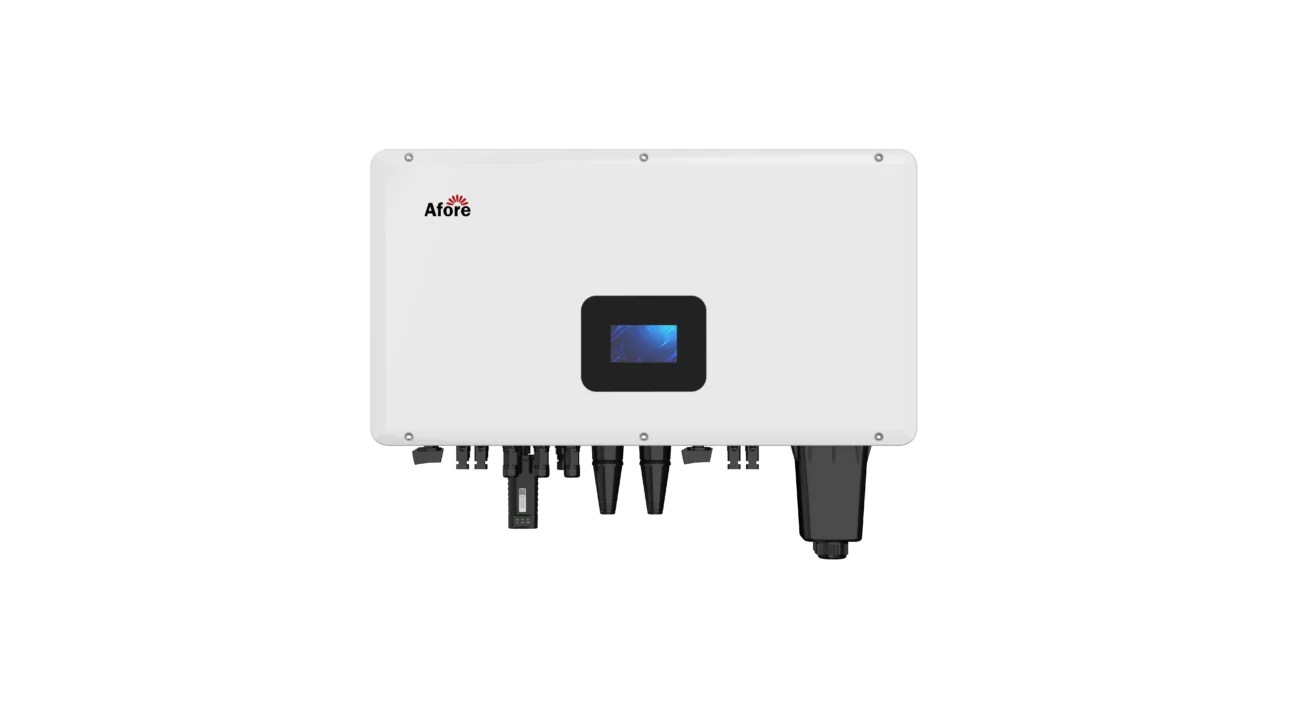
When Should You Use Multiple Inverters or Microinverters?
Choosing between a single inverter, multiple inverters, or a system of microinverters can significantly affect how efficiently your solar system performs. While a single unit is often enough for smaller rooftops, there are many situations where splitting the load across multiple inverters — or assigning one microinverter per panel — is the smarter, more flexible choice. The decision comes down to system design, shading, roof orientation, and future plans for expansion.
Indications for Multiple String Inverters
Using more than one inverter isn’t always about size; it’s about control and optimization. When your property has multiple roof surfaces or structures facing different directions, a single inverter may struggle to manage the variable sunlight each section receives.
Here’s when installing multiple inverters makes sense:
- Multiple Roof Facets or Orientations – If part of your roof faces south while another faces west, one inverter could underperform because it can’t adjust to different light angles simultaneously. Multiple inverters allow each array to operate at its own optimal voltage and current.
- Large System Size – Systems exceeding the capacity of a single inverter naturally require multiple units to share the power load. This setup ensures that no inverter is pushed beyond its rated capacity.
- Separate Arrays or Buildings – Properties with detached garages, carports, or ground-mounted systems benefit from having independent inverters for each array. It simplifies wiring and allows each system to function independently.
- Operational Redundancy – If one inverter fails, the rest continue working, minimizing downtime. This redundancy is especially valuable for systems supporting critical power needs.
By distributing the work among several inverters, the overall system becomes more efficient and resilient. It also makes maintenance easier — one inverter can be serviced without shutting down the entire solar setup.
When Microinverters or Power Optimizers Make Sense
In certain cases, using microinverters — small inverters attached directly to each panel — can dramatically improve performance and monitoring. Each microinverter operates independently, converting DC to AC right at the panel. That independence means shading, dirt, or mismatch on one panel won’t affect the others.
Мікроінвертори ідеально підходять для:
- Shaded Roofs – Even minor shading can reduce the output of an entire string when using a single inverter. Microinverters isolate each panel, keeping the rest producing at full power.
- Complex Roof Designs – Homes with dormers, skylights, or multiple roof angles benefit from microinverters because each panel can face a different direction without compromising the array’s efficiency.
- Performance Monitoring – Because each panel has its own inverter, you can monitor performance on a per-panel basis. This makes it easy to detect underperforming panels or diagnose faults quickly.
- System Expansion – Adding new panels later is simple — just attach more microinverters. There’s no need to reconfigure a large string inverter or recalculate string voltage limits.
While microinverters have a higher upfront cost compared to string systems, they often deliver superior energy yield in challenging conditions. They provide flexibility, scalability, and better visibility into system performance.
Cost vs. Benefit Considerations
When deciding between multiple inverters or microinverters, the key is to weigh cost, performance, and maintenance:
- Upfront Cost – A system with multiple inverters or microinverters usually costs more initially, but it can produce more energy and require fewer repairs in the long term.
- Energy Yield – Systems using microinverters or multiple string inverters often achieve higher overall yield because they reduce the impact of shading, panel mismatch, and orientation differences.
- Maintenance – Multiple inverters allow for partial maintenance without total shutdown, while microinverters make fault detection easier but can be more time-consuming to access if mounted on the roof.
- Longevity – Running several smaller inverters instead of one large one reduces strain on each unit, often extending the system’s lifespan.
The best approach depends on your roof layout, environment, and goals. For a simple, unshaded roof with all panels facing the same way, a single inverter may be all you need. But for complex or partially shaded systems, multiple inverters or microinverters offer a smarter path toward consistent performance and long-term reliability.
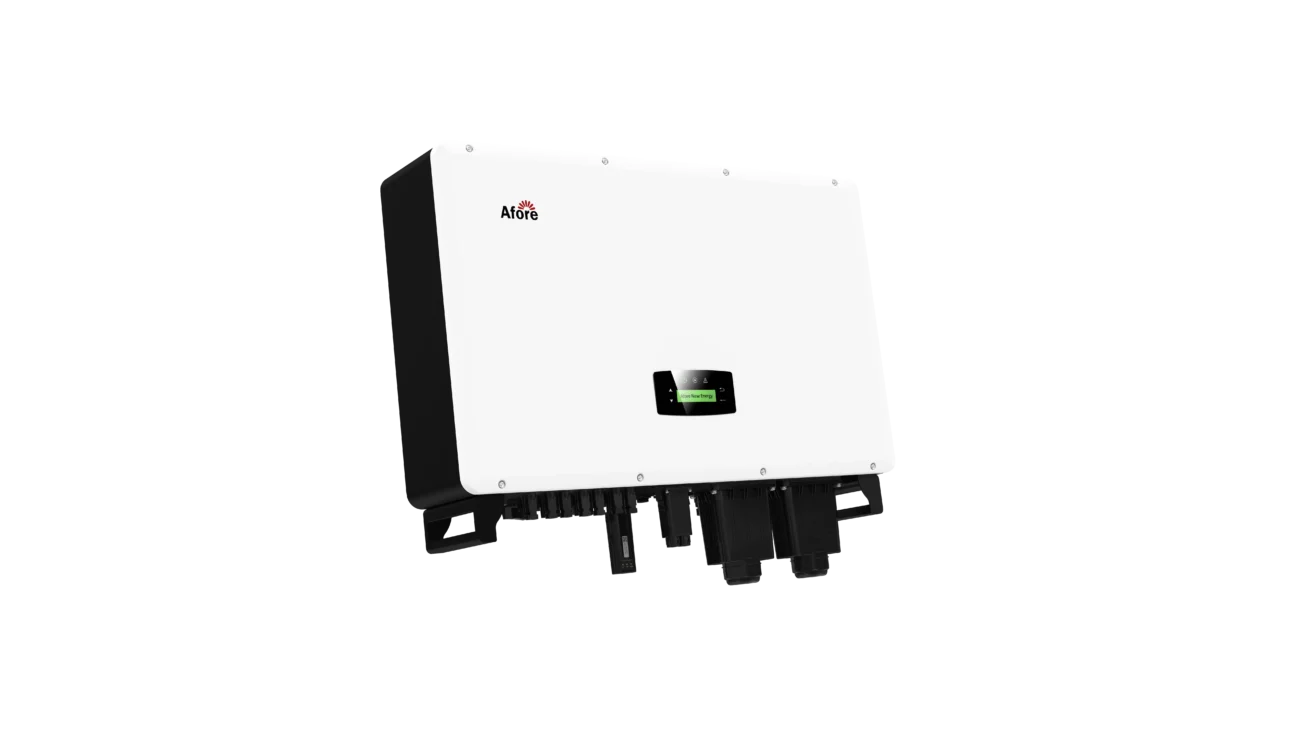
Common Pitfalls and How to Avoid Them
Even the most carefully planned solar installations can underperform if critical details are overlooked. Many issues in solar design come down to one key factor — the inverter. As the heart of the system, the inverter governs how efficiently power flows from your panels to your home. When it’s undersized, misconfigured, or poorly placed, energy losses can quickly add up. Below are the most common pitfalls solar owners and DIY installers face, along with proven strategies to avoid them.
Pitfall 1 — Oversizing or Undersizing the Inverter
A mismatch between your panel capacity and inverter rating is one of the most frequent errors. Oversizing an inverter means it rarely runs near its optimal efficiency point, wasting potential energy. Undersizing, on the other hand, leads to “clipping” — when the inverter limits output to prevent overload, cutting off potential production during peak sunlight hours.
How to avoid it:
- Calculate the proper DC-to-AC ratio, ideally between 1.2 and 1.4.
- Use realistic solar irradiance data for your area instead of relying solely on panel specs.
- Account for local temperature swings, as these affect voltage and overall performance.
A correctly sized solar inverter ensures a balance between cost, efficiency, and longevity.
Pitfall 2 — Ignoring Shading and Roof Orientation
Even a small shadow can significantly reduce production if panels are wired into a single inverter string. Many homeowners overlook how nearby trees, chimneys, or neighboring buildings affect generation throughout the day.
How to avoid it:
- Conduct a full shade analysis before installation.
- Consider multiple inverters or microinverters if shading is unavoidable.
- Use separate strings for panels that face different directions to maximize sunlight capture.
Your inverter can only convert what it receives — so give it consistent, reliable input.
Pitfall 3 — Poor Placement and Ventilation
The inverter works hardest when converting DC to AC power, which naturally generates heat. Installing it in a cramped or poorly ventilated space leads to overheating, efficiency losses, and premature wear.
How to avoid it:
- Mount the inverter in a cool, shaded, and well-ventilated area.
- Avoid direct sunlight or areas with high humidity.
- Ensure at least a few inches of clearance around the device for airflow.
Proper thermal management keeps your solar inverter running efficiently year-round.
Pitfall 4 — Failing to Plan for System Expansion
A common mistake is designing a system that meets current needs but leaves no room for growth. Adding more panels later may overload an inverter that wasn’t sized with expansion in mind.
How to avoid it:
- Choose an inverter that allows for additional capacity.
- Leave space in electrical panels and conduits for future upgrades.
- Document system specifications so expansion can be done seamlessly in the future.
A forward-thinking design saves both time and money when energy demands grow.
Pitfall 5 — Inadequate Monitoring or Maintenance
Even the best-designed system requires ongoing attention. Neglecting to monitor inverter performance or maintain the system can lead to unnoticed faults, lower production, or even inverter failure.
How to avoid it:
- Check your inverter’s data portal regularly to track daily and monthly output.
- Schedule annual inspections to verify wiring integrity and cleaning.
- Act immediately on any error codes or unusual inverter behavior.
A proactive approach ensures that your solar inverter continues converting clean energy at peak efficiency.
Pitfall 6 — Overloading the Inverter with Too Many Panels
Pushing an inverter beyond its rated input capacity can trigger protective shutdowns or permanent damage. It’s tempting to connect “just a few more panels,” but doing so can reduce reliability and shorten equipment lifespan.
How to avoid it:
- Always adhere to manufacturer voltage and current limits.
- Recalculate total DC input when adding new panels to ensure the inverter remains within safe operating thresholds.
- If expansion exceeds those limits, install a secondary inverter instead of overloading the existing one.
Pitfall 7 — Ignoring Grid and Electrical Code Requirements
Connecting an inverter incorrectly or using improper wiring can lead to compliance issues and safety hazards. Each region has unique electrical standards that must be followed for safe and legal operation.
How to avoid it:
- Review local grid interconnection rules before installation.
- Use certified electricians familiar with solar standards.
- Ensure that breakers, fuses, and grounding meet required ratings.
Compliance isn’t optional — it protects both your equipment and everyone who uses the power it generates.
Avoiding these pitfalls requires careful planning, ongoing awareness, and a commitment to safety. A well-installed and properly maintained inverter system not only delivers higher energy yields but also ensures stability, efficiency, and peace of mind for years to come.
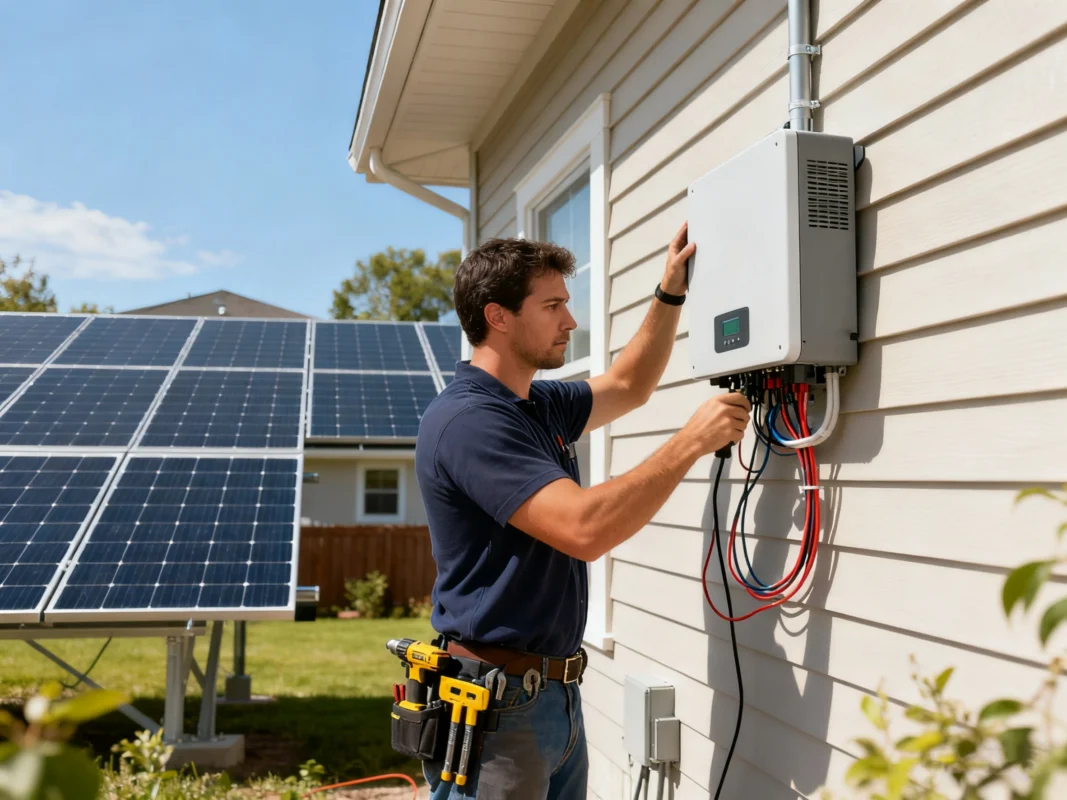
Case Study / Illustrative Examples
Real-world examples can bring technical concepts to life. Understanding how different inverter setups perform in actual solar installations helps homeowners and system designers make smarter choices. Below are three illustrative scenarios showing how inverter sizing, configuration, and design decisions impact long-term system efficiency and energy yield.
Case Study 1 — The Importance of Correct Inverter Sizing
Scenario:
A homeowner installed 24 solar panels rated at 410 watts each, giving a total DC capacity of 9.84 kW. Initially, they paired this array with an inverter rated at 7.6 kW to save on upfront costs.
What happened:
During peak sunlight hours in summer, the inverter regularly clipped power output because the panels were generating more energy than it could handle. While the system still produced solid output overall, they were losing around 5–8% of potential generation on the brightest days.
Solution:
After monitoring production data for several months, the installer adjusted the configuration by adding a secondary inverter and splitting the array. This balance reduced clipping and distributed load evenly, improving overall inverter efficiency.
Lesson learned:
Always design your solar inverter capacity to match real-world conditions — not just nameplate ratings. A small mismatch might seem harmless, but over time it can lead to measurable energy losses.
Case Study 2 — Managing Roof Orientations with Multiple Inverters
Scenario:
A mid-sized property had two separate roof surfaces: one facing south and one facing west. The panels on the west-facing side received sunlight later in the day, creating uneven power production across the array.
What happened:
Initially, all panels were connected to a single inverter with two strings. However, when one side of the roof was shaded or underproducing, the entire system’s performance dropped, because the inverter could not manage the two orientations efficiently.
Solution:
The design was later updated to include two smaller inverters, each serving one roof plane. This allowed both sections to operate at their optimal voltage independently. Afternoon production increased significantly, improving total daily yield by more than 10%.
Lesson learned:
When panels face different directions, using multiple solar inverters ensures maximum energy harvest throughout the day. It’s not about more equipment — it’s about more control.
Case Study 3 — The Advantage of Microinverters in Shaded Environments
Scenario:
A home surrounded by tall trees faced partial shading for several hours each morning. Instead of using a traditional string inverter, the system designer opted for microinverters, assigning one per panel.
What happened:
While some panels were shaded early in the day, others in full sun continued performing at maximum output. Because each panel worked independently, the shaded panels didn’t drag down the performance of the rest of the array.
Results:
Data from the first year showed that total energy yield was approximately 15% higher than what a string inverter setup would have produced under the same conditions. The homeowner also benefited from detailed panel-level monitoring, quickly spotting when debris or leaves affected a single module.
Lesson learned:
In environments where shading is unavoidable, distributed inverter designs — like microinverters — can dramatically increase total production and simplify troubleshooting.
Case Study 4 — Overcoming Overheating and Ventilation Problems
Scenario:
A homeowner installed their inverter in a small utility closet with limited airflow. During hot summer months, the inverter frequently shut down to protect itself from overheating.
What happened:
Each shutdown reduced daily energy output and increased system wear. The owner initially assumed the issue was electrical, but thermal monitoring later revealed that high ambient temperature was the cause.
Solution:
The inverter was relocated to a shaded exterior wall with adequate ventilation. Once cooling airflow was established, the system operated continuously even during peak heat, improving uptime and efficiency.
Lesson learned:
The placement of your solar inverter is as critical as its size. Treat it like a high-performance electronic component that needs breathing room. Proper installation can prevent unnecessary downtime and extend the system’s lifespan.
Case Study 5 — Planning for Expansion from the Start
Scenario:
A small business installed a solar system sized exactly to their current energy needs. A year later, they expanded operations and wanted to add more panels. Unfortunately, their original inverter was already operating at maximum capacity.
What happened:
Since the existing inverter couldn’t handle additional input, they were forced to purchase a second unit and rewire part of the system — adding unexpected costs and complexity.
Solution:
A better approach would have been to plan ahead with a slightly larger solar inverter or an inverter system designed for modular expansion.
Lesson learned:
Always anticipate future energy growth. It’s far easier — and cheaper — to leave room for additional panels in your initial design than to retrofit later.
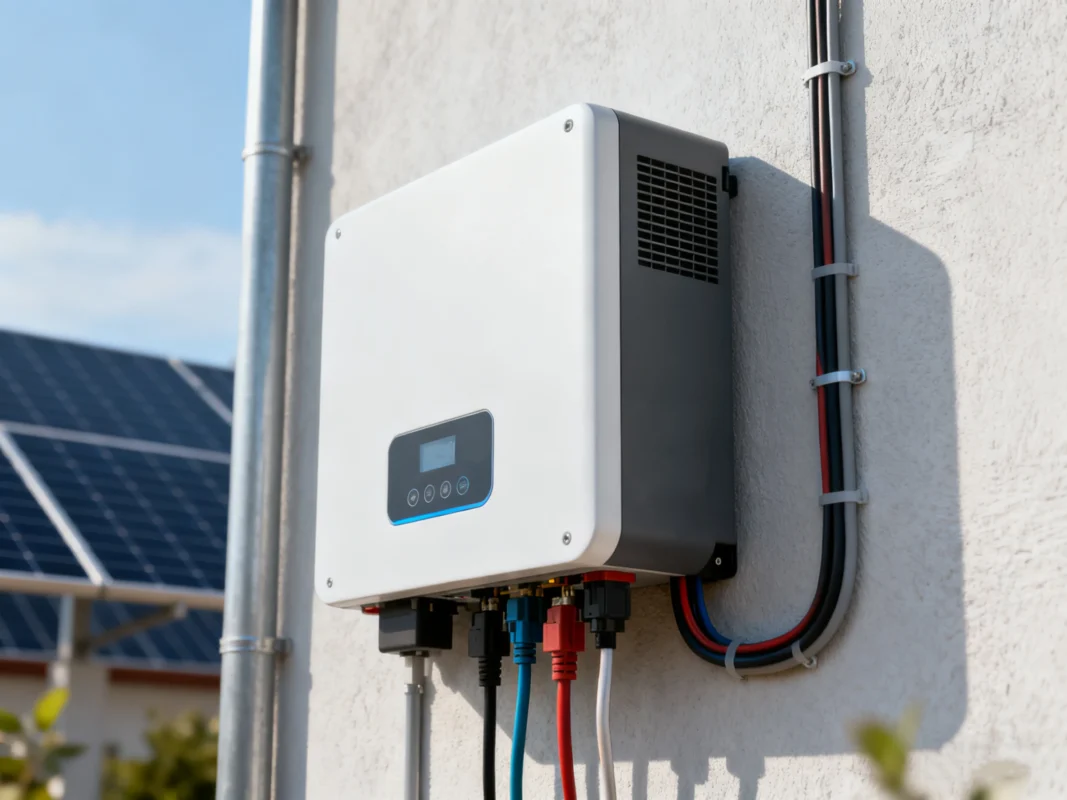
Summary & Key Takeaways
In summary: the number of inverters you need and how many panels you can attach to a given inverter depend on a range of design decisions. The key points to remember:
- The inverter is the heart of your solar system—it must be properly sized and matched to panels for efficiency, reliability and longevity.
- Many residential setups can be handled by a single string inverter; more complex roofs, shading or future‐proofing may require multiple inverters or microinverters.
- To determine how many panels per inverter, check input voltage/current limits, design series/parallel wiring appropriately, and consider the DC:AC ratio (oversizing) carefully.
- Oversizing panel arrays relative to inverter capacity (e.g., DC:AC ~1.1-1.3) is common; but pushing beyond safe limits causes clipping and may violate warranty or reduce lifespan.
- Choose between string, multiple string or microinverter systems based on your site: shading, roof orientation, expansion plans and maintenance.
- Avoid common pitfalls: too many panels for one inverter, mismatched orientation on one inverter, ignoring input limits, and skipping monitoring/maintenance.
- Always consult manufacturer specs and installation guidelines, and when in doubt work with a qualified installer.
By following these design principles you’ll ensure that your сонячний інвертор setup is optimised, your system yields maximum energy, and the lifetime performance is strong. As someone who’s designed, installed and supervised many systems, I can tell you: the difference between a well‐sized inverter and an afterthought one can be thousands of kilowatt-hours over the system’s life, plus fewer visits, fewer failures, higher satisfaction.
Поширені запитання
-
What is a solar inverter and why is it necessary?
A solar inverter converts the direct current (DC) electricity produced by solar panels into alternating current (AC) electricity that your home and grid can use. Without it, the energy generated by your panels would be unusable. Beyond conversion, inverters also optimize system performance, monitor output, and ensure safe operation.
-
How many inverters do I need for my solar setup?
The number depends on your system size, roof layout, shading, and energy goals. Small residential systems often need just one inverter, while larger arrays, multiple roof orientations, or shaded installations may require multiple inverters or microinverters for optimal efficiency and reliability.
-
Can I connect too many panels to a single inverter?
Yes. Every inverter has maximum voltage, current, and power limits. Exceeding these can cause clipping, overheating, or permanent damage. Always calculate string voltage and total DC input to stay within the manufacturer’s recommended specifications.
-
What is the ideal DC-to-AC ratio for a solar inverter?
A typical DC-to-AC ratio ranges from 1.2 to 1.4. This means your total panel wattage can exceed the inverter’s AC rating by 20–40% without losing efficiency. This allows the inverter to operate near full capacity during varying sunlight conditions.
-
How does shading affect inverter performance?
Shading on even a single panel can reduce the output of an entire string when using a single inverter. Microinverters or multiple string inverters can isolate shaded panels so they don’t impact the rest of the system, maintaining higher overall energy production.
-
Should I use microinverters or string inverters?
• String inverters are cost-effective and work well when panels face the same direction and receive uniform sunlight.
• Microinverters are better for complex roof layouts, shading, or if you want panel-level monitoring. The choice depends on your roof, shading, and long-term energy goals. -
How do I maintain my solar inverter?
Regular maintenance includes:
• Monitoring output daily or weekly through the inverter’s interface.
• Inspecting for overheating, dust, or corrosion.
• Ensuring proper ventilation and airflow.
• Scheduling annual professional inspections to check wiring, connections, and electrical components. -
What happens if my inverter overheats?
Overheating can cause the inverter to temporarily shut down, reduce efficiency, or, over time, shorten its lifespan. Proper placement in a shaded, ventilated area and monitoring system temperatures can prevent these issues.
-
Can one inverter handle panels on different roof orientations?
It can, but efficiency may suffer if sunlight conditions vary widely between arrays. Multiple inverters or microinverters allow each section to operate independently, maximizing total energy harvest.
-
How long do solar inverters typically last?
Most inverters last between 10 and 15 years, depending on quality, installation conditions, and maintenance. Proper sizing, ventilation, and routine checks can extend their operational life.
-
What should I do if my inverter displays an error code?
Error codes indicate specific issues like voltage or current limits, temperature warnings, or connectivity problems. Refer to the inverter’s manual or consult a certified solar technician promptly to prevent damage and restore optimal performance.
-
Is it better to oversize panels or inverters?
Moderate oversizing of panels relative to inverter capacity is common and improves efficiency during low-light conditions. However, excessive oversizing can lead to clipping and stress the inverter. Always stay within recommended DC-to-AC ratios for safe and efficient operation.




